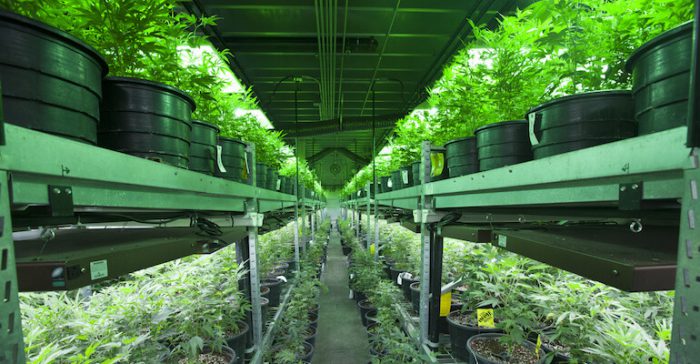Massachusetts approves energy regulations for cannabis cultivation. What are the implications?
Written by Sam Milton, Climate Resources Group, March 1, 2018
In its final day of deliberations after a wide-ranging nearly 6-month regulation-development process, the Massachusetts Cannabis Control Commission (CCC) just raised the bar on cannabis cultivation in the state.
In short, the Commission agreed to include all of the recommendations of the Massachusetts Executive Office of Energy and Environmental Affairs. If these recommendations are included in final regulations due to be filed by March 15, Massachusetts will arguably have the greenest cannabis industry in the country.
What are these regs, and why should we care?
- A lighting power density (LPD) standard of no more than 36 W per square foot of canopy for a cultivation facility with over 5,000 ft² of canopy. For smaller facilities, the commission establishes a LPD standard of 50 W per square foot. This is a hugedevelopment, as these regulations effectively prohibit the use of any lighting technology that uses more power than LEDs, which hits especially hard those growers that favor the popular (and relatively inexpensive and inefficient) high-intensity discharge (HID) and high-pressure sodium (HPS) lamps. Will this affect utilities’ other incentives for controlled environment agriculture technologies? How will the market for better-than-standard lights evolve in order to qualify for utility rebates? Will this result in a glut of shoddy but “efficient” lighting products in the short term? How will this affect lighting innovation? Finally, how will this regulation affect efforts to develop the “perfect” lighting efficiency standard?
- Building and HVAC codes. The building envelope for all facilities, except greenhouses, and Heating Ventilation and Air Conditioning (HVAC) and dehumidification systems must meet minimum Massachusetts Building Code requirements and relevant IECC and ASHRAE chapters. Will this regulation supercharge efforts to develop horticulture-specific building codes? How long will this take, and what will be the unintended impact of this regulation in the meantime?
- A waiver to LPD and HVAC codes if licensees use electricity from 100% renewable energy sources. The CCC approved language providing a waiver for the lighting power density and HVAC code standards if the license holder uses 100% renewable energy equal to its onsite electricity consumption. Will power need to be generated onsite to qualify?
- Energy use disclosure. The CCC adopted a recommendation submitted by the Resource Innovation Institute and others to require cultivation licensees to provide energy use data on an annual basis. How will the Commission make the best use of this data?
- Energy planning. CCC adopted specific energy and water planning language. Specifically, all marijuana establishments must demonstrate consideration of: opportunities for renewable energy generation, strategies to reduce electric demand, engagement with state and utility energy efficiency programs, and potential energy use reduction opportunities. Will thoughtful consideration of these issues actually drive resources efficiency in grow operations?
All in all, absorbing the implication of these regulations will take some time, but make no mistake these regulations show that the Commonwealth of Massachusetts is serious about meeting its targets for clean energy and carbon emissions reduction. Further, I expect that innovation driven by these regulations will result in Massachusetts cultivators being at the vanguard of growers nationwide and can help drive best practices across the country. What do you think?
[mks_button size=”medium” title=”This article originally appeared on LinkedIn and was written by Sam Milton, a principal of Climate Resources Group.” style=”squared” url=”https://www.linkedin.com/pulse/massachusetts-approves-energy-regulations-cannabis-what-sam-milton/” target=”_self” bg_color=”#bababa” txt_color=”#FFFFFF” icon=”” icon_type=”” nofollow=”0″]

